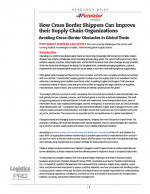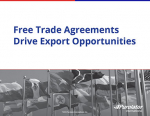Understanding Compliance Obligations for your Most Sensitive Shipments
Although the vast majority of U.S. exporters do not raise any national security concerns, those with products that have even a remote chance of triggering an export restriction, must be aware of U.S. regulations and any potential implications.
In 2012, Connecticut-based United Technologies Corporation (UTC) agreed to pay more than $75 million to settle charges that it had violated the United States International Traffic in Arms Regulations (ITAR) and the Arms Export Control Act (ACEA) - 576 times.
Among other things, the corporation’s Canadian subsidiary, Pratt Whitney Canada (PWC) was accused of selling helicopter engines to the Chinese government for manufacture in China’s Z-10 military helicopter.
The engines included software that was restricted by ITAR. That transaction resulted in a one-year “debarment” of PWC from soliciting or engaging in any U.S. defense-related trade.
The UTC/Pratt Whitney Canada case is significant for many reasons, not the least of which was the significant monetary penalties assessed.
The case illustrates the absolute seriousness with which the U.S. government takes the export of products in any way related to U.S. national security, or considered to be highly sensitive. It also makes clear that the government’s strict standards are not open to interpretation.
If fact, the administrative law judge who processed the case specifically cited PWC’s “own favorable interpretation of ITAR regulations,” in explaining the scope of penalties levied against the company.
ITAR regulations, administered by the U.S. Department of State, are one of three major regulatory codes that control and restrict the transfer of critical products, technologies, software, data and other materials to foreign countries.
The other two regulatory codes are the Export Administration Regulations (EAR), maintained by the Bureau of Industry Security (BIS), located within the U.S. Department of Commerce, and the Office of Foreign Assets Control (OFAC), administered by the U.S. Treasury Department.
What’s Related




Favorites





